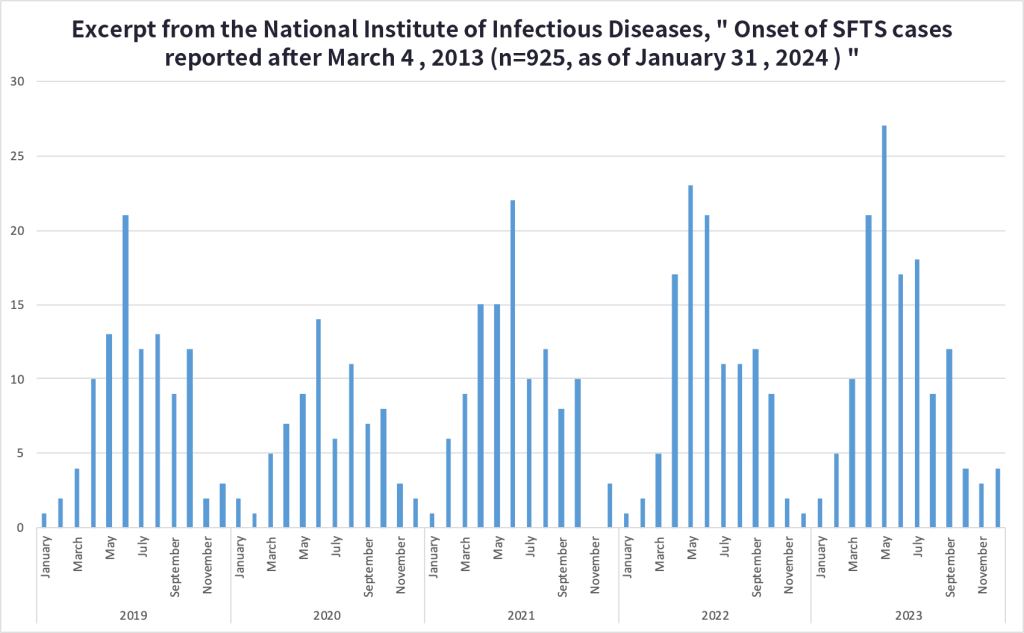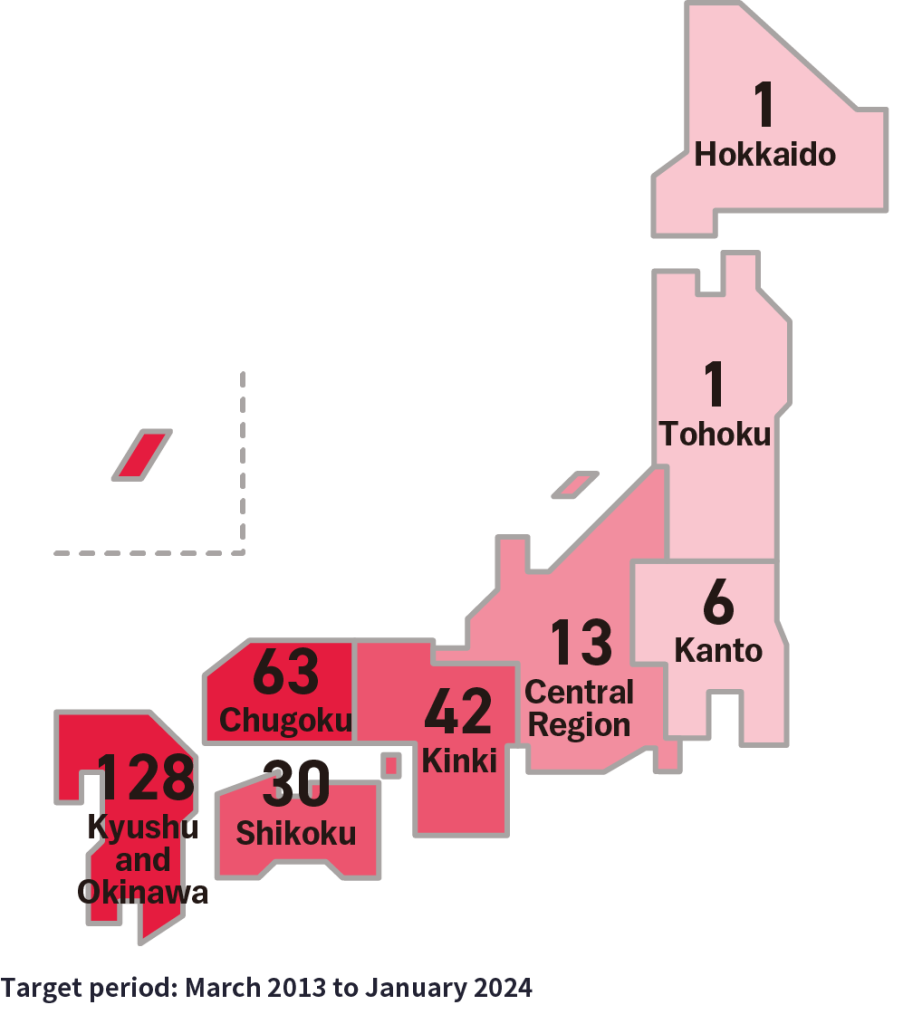
About Severe Fever with Thrombocytopenia Syndrome (SFTS)
This month, there have been reports of an increase in the number of infections of severe fever with thrombocytopenia syndrome (SFTS), a highly fatal infectious disease transmitted by ticks. The infected areas, which were previously centered in western Japan, are gradually moving eastward, and the number of patients in Japan last year reached a record high.
We compared the monthly and annual trends in the number of cases reported in the National Institute of Infectious Diseases’ SFTS Infection Trend Surveillance and the actual number of SFTS patients in the MDV database.
We then compared the number of reported SFTS cases in each of the eight areas nationwide in the survey with the actual number of patients in the MDV data for each of the eight areas nationwide.
References:
National Institute of Infectious Diseases “Onset of SFTS cases reported after March 4, 2013 (n=925, as of January 31, 2024)”
National Institute of Infectious Diseases ” Regions where SFTS cases were reported (n=939, as of January 31, 2024)”
First, we compared the National Institute of Infectious Diseases’ ” Onset of SFTS cases reported after March 4, 2013 (n=925, as of January 31, 2024)” with the MDV data on the actual number of patients with “8847704: severe fever with thrombocytopenia syndrome . “


Data period: January 2019 to December 2022
Number of facilities that meet basic requirements: 361 facilities
Next, a comparison was made of annual trends over the same period.Annual trends in the number of diagnoses and reports of “onset of SFTS cases”

Both sets of data confirmed that the number of cases peaks in the spring and summer throughout the year , and that after a temporary downward trend during the COVID-19 pandemic, the number has now been increasing again.
Next, the country was divided into eight areas and the disease status by region was compiled.
the National Institute of Infectious Diseases’ ” Regions where SFTS cases were reported (n=939, as of January 31, 2024)”

MDV data on the number of patients with severe fever with thrombocytopenia syndrome (SFTS) in 8 areas nationwide

Area composition division
[Hokkaido] Hokkaido
[Tohoku] Aomori Prefecture, Iwate Prefecture, Miyagi Prefecture, Akita Prefecture, Yamagata Prefecture, Fukushima Prefecture
[Kanto] Ibaraki Prefecture, Tochigi Prefecture, Gunma Prefecture, Saitama Prefecture, Chiba Prefecture, Tokyo, Kanagawa Prefecture
[Central Region] Niigata Prefecture, Toyama Prefecture, Ishikawa Prefecture, Fukui Prefecture, Yamanashi Prefecture, Nagano Prefecture, Gifu Prefecture, Shizuoka Prefecture, Aichi Prefecture
[Kinki] Mie Prefecture, Shiga Prefecture, Kyoto Prefecture, Osaka Prefecture, Hyogo Prefecture, Nara Prefecture, Wakayama Prefecture
[Chugoku] Tottori Prefecture, Shimane Prefecture, Okayama Prefecture, Hiroshima Prefecture, Yamaguchi Prefecture
[Shikoku] Tokushima Prefecture, Kagawa Prefecture, Ehime Prefecture, Kochi Prefecture
[Kyushu and Okinawa] Fukuoka Prefecture, Saga Prefecture, Nagasaki Prefecture, Kumamoto Prefecture, Oita Prefecture, Miyazaki Prefecture, Kagoshima Prefecture, Okinawa Prefecture
Data period: January 2019 to December 2023
Only hospitals with complete data for the specified month (inpatients )
Number of facilities that meet basic requirements: 366
Our data confirmed that the disease is primarily present in western Japan.
Note: This article was published on June 1, 2024.
Data survey and analysis tailored to your specific requests
Databases, data analysis requests, and more.
© Medical Data Vision Co., Ltd. All Rights Reserved.





